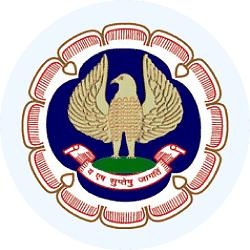CA Foundation Exam > CA Foundation Notes > Business Economics for CA Foundation > PPT: The Instruments of Trade Policy
PPT: The Instruments of Trade Policy | Business Economics for CA Foundation PDF Download
| Download, print and study this document offline |
Please wait while the PDF view is loading
Page 1 The Instruments of Trade Policy Page 2 The Instruments of Trade Policy Developments in India's International Trade Strategy: India shifted from avoiding FTAs to actively pursuing them, aiming to become globally FTA- engaged. This renewed focus began with Mauritius (April 2021), followed by fast-track negotiations with UAE, Australia, UK, Canada, and EU. Key agreements include CEPA with UAE (February 2022) and ECTA with Australia (April 2022). Upcoming FTAs with UK, Canada, EU, and Gulf Cooperation Council are in progress. Page 3 The Instruments of Trade Policy Developments in India's International Trade Strategy: India shifted from avoiding FTAs to actively pursuing them, aiming to become globally FTA- engaged. This renewed focus began with Mauritius (April 2021), followed by fast-track negotiations with UAE, Australia, UK, Canada, and EU. Key agreements include CEPA with UAE (February 2022) and ECTA with Australia (April 2022). Upcoming FTAs with UK, Canada, EU, and Gulf Cooperation Council are in progress. Trade Concepts Free Trade Minimal state interference in trade, allowing market forces to determine prices. Protectionism State policy protecting domestic producers from foreign competition through tariffs and quotas. Page 4 The Instruments of Trade Policy Developments in India's International Trade Strategy: India shifted from avoiding FTAs to actively pursuing them, aiming to become globally FTA- engaged. This renewed focus began with Mauritius (April 2021), followed by fast-track negotiations with UAE, Australia, UK, Canada, and EU. Key agreements include CEPA with UAE (February 2022) and ECTA with Australia (April 2022). Upcoming FTAs with UK, Canada, EU, and Gulf Cooperation Council are in progress. Trade Concepts Free Trade Minimal state interference in trade, allowing market forces to determine prices. Protectionism State policy protecting domestic producers from foreign competition through tariffs and quotas. Benefits and Challenges of Trade Benefits Economic growth Job creation Improved welfare Trade is associated with efficiency benefits in terms of economic growth, job creation, and welfare. Challenges Unfair competition Domestic disruption Adjustment difficulties Unobstructed international trade can cause significant disruption to domestic firms and industries due to adjustment challenges. Trade policy includes all tools that governments use to promote or restrict imports and exports, classified into: 1 Price-related measures Such as tariffs 2 Non-price measures Also known as non-tariff measures (NTMs) Page 5 The Instruments of Trade Policy Developments in India's International Trade Strategy: India shifted from avoiding FTAs to actively pursuing them, aiming to become globally FTA- engaged. This renewed focus began with Mauritius (April 2021), followed by fast-track negotiations with UAE, Australia, UK, Canada, and EU. Key agreements include CEPA with UAE (February 2022) and ECTA with Australia (April 2022). Upcoming FTAs with UK, Canada, EU, and Gulf Cooperation Council are in progress. Trade Concepts Free Trade Minimal state interference in trade, allowing market forces to determine prices. Protectionism State policy protecting domestic producers from foreign competition through tariffs and quotas. Benefits and Challenges of Trade Benefits Economic growth Job creation Improved welfare Trade is associated with efficiency benefits in terms of economic growth, job creation, and welfare. Challenges Unfair competition Domestic disruption Adjustment difficulties Unobstructed international trade can cause significant disruption to domestic firms and industries due to adjustment challenges. Trade policy includes all tools that governments use to promote or restrict imports and exports, classified into: 1 Price-related measures Such as tariffs 2 Non-price measures Also known as non-tariff measures (NTMs) T a r i f f s Tariffs, often referred to as customs duties, are essentially taxes imposed on goods and services that are imported or exported. What are Tariffs? Taxes imposed on goods and services when they cross borders, with different rates for different items specified in a tariff schedule. Import vs Export Duties Import duties are more common and are often what people mean when they refer to tariffs. Purpose of Tariffs To adjust relative prices of imported goods, generate government revenue, and protect domestic industries.Read More
|
86 videos|255 docs|58 tests
|
Related Searches















